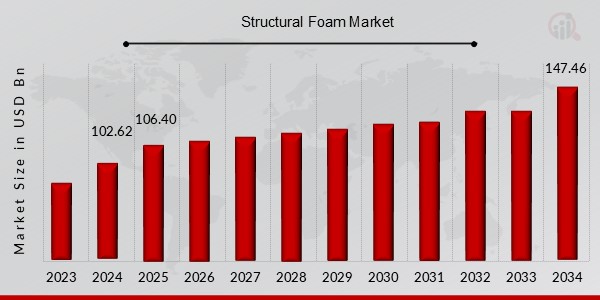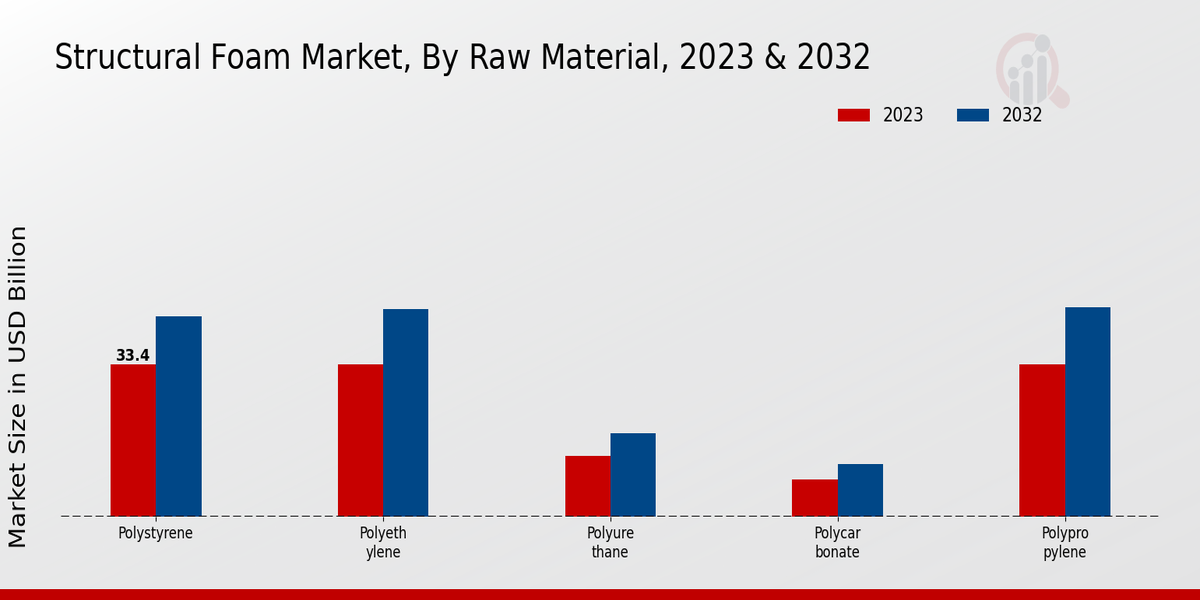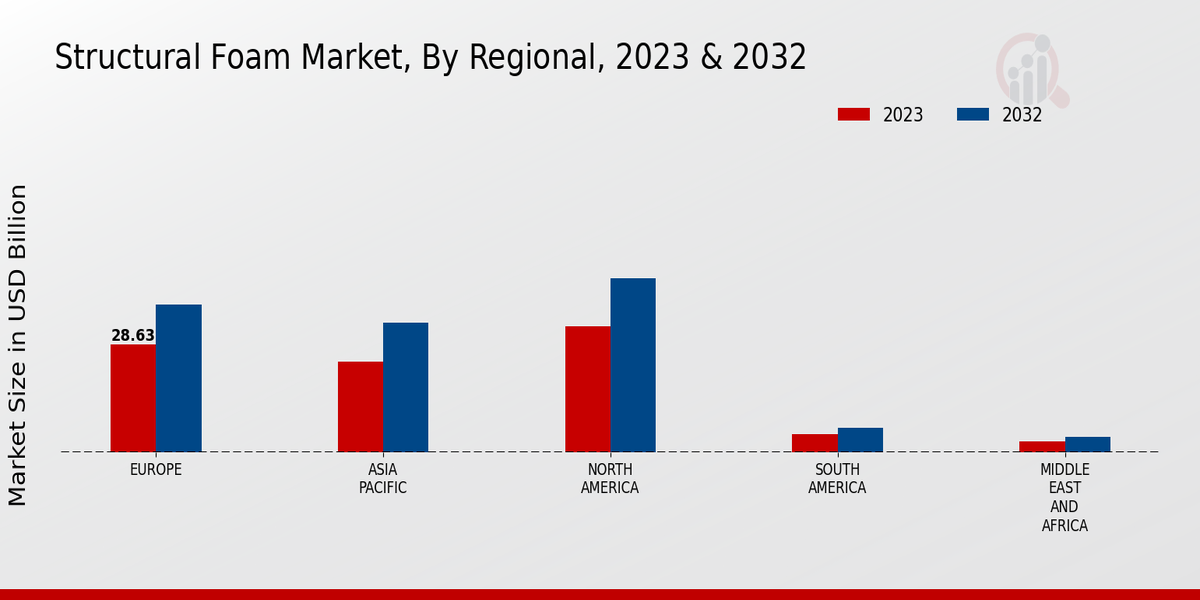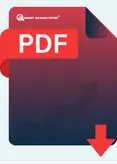Global Structural Foam Market Overview
The Structural Foam Market Size was estimated at 102.62 (USD Billion) in 2024. Structural Foam Industry is expected to grow from 106.40 (USD Billion) in 2025 to 147.46 (USD Billion) by 2034, at a CAGR (growth rate) is expected to be around 3.69% during the forecast period (2025 - 2034)
Key Structural Foam Market Trends Highlighted
The structural foam market is expanding rapidly, driven by the increasing demand for lightweight and high-performance materials in various end-use industries. Key market drivers include stringent emission regulations, rising consumer preference for fuel-efficient vehicles, and the growing adoption of structural foam in construction and packaging applications.Recent trends include the emergence of bio-based and recyclable structural foam grades, advancements in blow molding and injection molding technologies, and the integration of sensors and electronics.
Opportunities for exploration lie in the development of eco-friendly materials, lightweight composites, and multi-functional structural foams that offer enhanced performance and sustainability.The market is highly competitive, with established players focusing on innovation and product differentiation. Key players are investing in research and development to expand their product portfolios and meet the evolving needs of end-users. Mergers and acquisitions are also expected to reshape the market landscape in the coming years.

Source: Primary Research, Secondary Research, Market Research Future Database and Analyst Review
Structural Foam Market Drivers
Rising Demand for Lightweight Vehicles
The increasing demand for lightweight vehicles, particularly in the automotive industry, is driving the growth of the structural foam market. Structural foams are lightweight, strong, and durable materials that are used in various automotive components, such as bumpers, dashboards, and interior panels. The use of structural foams in vehicles helps reduce weight, improve fuel efficiency, and enhance safety. As the demand for lightweight vehicles continues to rise, the demand for structural foam is expected to grow accordingly, driving the growth of the Structural Foam Market Industry.
Growing Construction Industry
The expanding construction industry is another major factor driving the growth of the structural foam market. Structural foams are increasingly used in construction applications, such as insulation, roofing, and wall panels. They offer excellent thermal insulation properties, making them ideal for use in energy-efficient buildings. Additionally, structural foams are lightweight and easy to install, which further contributes to their popularity in the construction industry.The growth of the construction sector, particularly in emerging economies, is expected to continue to drive demand for structural foam in the coming years.
Advancements in Manufacturing Technology
Advancements in manufacturing technology have also contributed to the growth of the structural foam market. New technologies, such as high-pressure injection molding and 3D printing, have enabled the production of complex and high-quality structural foam components. These advancements have expanded the application scope of structural foams and allowed manufacturers to produce components with improved properties and reduced production costs. The ongoing development of innovative manufacturing technologies is expected to further drive the growth of the Structural Foam Market Industry.
Structural Foam Market Segment Insights:
Structural Foam Market Raw Material Insights
The Structural Foam Market is segmented based on Raw Material into Polystyrene, Polypropylene, Polyethylene, Polyurethane, and Polycarbonate. The Polystyrene segment held the largest market share in 2023, accounting for around 35% of the Structural Foam Market revenue. Polystyrene is a lightweight, rigid, and insulating material that is widely used in the construction, automotive, and packaging industries.
The Polypropylene segment is expected to grow at the highest CAGR during the forecast period, owing to its increasing use in automotive and consumer electronics applications.Polyethylene is another important segment in the Structural Foam Market, and it is expected to witness significant growth in the coming years due to its versatility and low cost. Polyurethane is a versatile material that is used in a wide range of applications, including insulation, cushioning, and coatings. The Polycarbonate segment is expected to grow at a steady pace during the forecast period, owing to its high strength and impact resistance.
The Structural Foam Market is also segmented based on End-Use Industry into Automotive, Construction, Packaging, Consumer Electronics, and Others.The Automotive segment is the largest end-use industry for structural foam, accounting for around 40% of the Structural Foam Market revenue in 2023. Structural foam is used in a variety of automotive applications, including interior trim, dashboards, and bumpers. The Construction segment is another important end-use industry for structural foam, and it is expected to witness significant growth in the coming years due to the increasing demand for lightweight and durable building materials.
The Packaging segment is also expected to grow at a steady pace during the forecast period, owing to the increasing demand for lightweight and protective packaging solutions.The Consumer Electronics segment is another important end-use industry for structural foam, and it is expected to witness significant growth in the coming years due to the increasing demand for lightweight and durable electronic devices. The Others segment includes a variety of other end-use industries, such as medical, furniture, and appliances.

Source: Primary Research, Secondary Research, Market Research Future Database and Analyst Review
Structural Foam Market Molding Process Insights
The Structural Foam Market is segmented by molding process into Injection Molding, Structural Web Molding, Compression Molding, Thermoforming, and Gas Assist Molding. In 2023, Injection Molding accounted for the largest market share, with a revenue of USD 35.52 billion. This is attributed to its high production efficiency, low cost, and ability to produce complex shapes. Structural Web Molding is expected to witness the fastest growth over the forecast period, with a CAGR of 4.2%.
This growth is due to its ability to produce lightweight and strong parts, which are in high demand in the automotive and aerospace industries.Compression Molding is a mature technology that is primarily used for producing large and thick-walled parts. Thermoforming is a versatile process that can be used to produce a wide variety of shapes and sizes. Gas Assist Molding is a relatively new technology that allows for the production of complex and lightweight parts with reduced material usage.
Structural Foam Market Application Insights
The Structural Foam Market segmentation based on Application consists of Automotive, Construction, Packaging, Consumer Products, and Medical Devices. The Automotive segment is expected to account for the largest share of the market in 2023, owing to the increasing demand for lightweight and durable materials in the automotive industry. The Construction segment is also expected to witness significant growth due to the increasing use of structural foam in building and construction applications.
The Packaging segment is expected to show steady growth due to the increasing demand for protective packaging solutions.The Consumer Products segment is also expected to witness growth due to the increasing use of structural foam in consumer electronics and appliances. The Medical Devices segment is expected to show moderate growth due to the increasing use of structural foam in medical devices and equipment.
Structural Foam Market Density Insights
The Structural Foam Market segmentation by density comprises low density, medium density, and high density. Low density structural foams are characterized by their lightweight and high strength-to-weight ratio, making them ideal for applications in the automotive and aerospace industries. Medium density structural foams offer a balance of strength and weight and are commonly used in construction, packaging, and furniture.
High density structural foams are the most robust and durable and are utilized in applications such as marine equipment and protective gear.In 2023, the low density segment held the largest market share, accounting for over 40% of the Structural Foam Market revenue. The high density segment is projected to exhibit the fastest growth rate, registering a CAGR of 4.2% over the forecast period.
Structural Foam Market Additives Insights
The Additives segment of the Structural Foam Market is expected to witness significant growth over the forecast period. In 2024, the market for Additives is projected to be valued at USD 1.2 billion, which is expected to grow to USD 1.6 billion by 2030, exhibiting a CAGR of 3.8% during the forecast period. Flame Retardants, Antioxidants, UV Stabilizers, Colorants, and Reinforcements are the key types of Additives used in Structural Foam.
Flame Retardants are expected to hold the largest market share over the forecast period due to increasing demand for fire-resistant materials in various end-use industries.Antioxidants are also expected to witness significant growth due to their ability to prevent degradation of structural foam caused by exposure to heat, light, and oxygen. UV Stabilizers are expected to witness increasing demand due to their ability to protect structural foam from the harmful effects of ultraviolet radiation. Colorants are used to enhance the aesthetic appeal of structural foam products and are expected to witness steady growth over the forecast period.
Reinforcements are used to improve the strength and durability of structural foam and are expected to witness significant growth due to their increasing use in automotive and construction applications.
Structural Foam Market Regional Insights
The Structural Foam Market is segmented into North America, Europe, APAC, South America, and MEA. North America is the largest region in the Structural Foam Market, accounting for over 35% of the market in 2023. The region is expected to continue to dominate the market over the forecast period, owing to the increasing demand for structural foam in the automotive and construction industries. Europe is the second largest region in the Structural Foam Market, accounting for over 30% of the market in 2023.
The region is expected to witness a steady growth in demand for structural foam over the forecast period, driven by the growing demand from the automotive and construction industries.APAC is the third largest region in the Structural Foam Market, accounting for over 25% of the market in 2023. The region is expected to witness a significant growth in demand for structural foam over the forecast period, owing to the increasing demand from the automotive and construction industries. South America is the fourth largest region in the Structural Foam Market, accounting for over 5% of the market in 2023.
The region is expected to witness a modest growth in demand for structural foam over the forecast period, driven by the growing demand from the automotive and construction industries.MEA is the smallest region in the Structural Foam Market, accounting for over 3% of the market in 2023. The region is expected to witness a slow growth in demand for structural foam over the forecast period, owing to the limited demand from the automotive and construction industries.

Source: Primary Research, Secondary Research, Market Research Future Database and Analyst Review
Structural Foam Market Key Players And Competitive Insights:
Major players in the Structural Foam Market industry are constantly striving to gain a competitive advantage by investing in research and development. Leading Structural Foam Market players are focusing on developing innovative products that meet the evolving needs of customers. The Structural Foam Market development of lightweight and durable structural foam materials has been a key trend in the industry. The competitive landscape of the Structural Foam Market is characterized by strategic partnerships and acquisitions as companies seek to expand their market presence.BASF is a leading Structural Foam Market player that offers a wide range of structural foam materials.
The company's portfolio includes expandable polystyrene (EPS), expanded polypropylene (EPP), and other advanced materials. BASF has a strong presence, and its products are used in a variety of industries, including automotive, construction, and packaging.Henkel is another prominent Structural Foam Market player that provides a comprehensive range of structural foam solutions. The company's product offerings include polyurethane foams, epoxy foams, and other high-performance materials. Henkel has a strong focus on sustainability, and its products are designed to minimize environmental impact. The company has a presence and serves a diverse customer base across various industries.
Key Companies in the Structural Foam Market Include:
Structural Foam Market Industry Developments
The Structural Foam Market is expected to reach a valuation of USD 132.25 billion by 2032, expanding at a CAGR of 3.69% from 2023 to 2032. Increasing demand for lightweight and durable materials in various industries, such as automotive, construction, and packaging, is anticipated to drive market growth.Recent developments include collaborations and acquisitions to strengthen market position. For instance, in 2023, BASF SE acquired Hexpol's Structural Foam business to enhance its portfolio of lightweight solutions. Moreover, advancements in technology and the introduction of bio-based structural foams are expected to create new opportunities in the market.
Structural Foam Market Segmentation Insights
| Report Attribute/Metric |
Details |
|
Market Size 2024
|
102.62 (USD Billion)
|
|
Market Size 2025
|
106.40 (USD Billion)
|
|
Market Size 2034
|
147.46 (USD Billion)
|
|
Compound Annual Growth Rate (CAGR)
|
3.69% (2025 - 2034)
|
|
Report Coverage
|
Revenue Forecast, Competitive Landscape, Growth Factors, and Trends
|
|
Base Year
|
2024
|
|
Market Forecast Period
|
2025 - 2034
|
|
Historical Data
|
2020 - 2024
|
| Market Forecast Units |
USD Billion |
| Key Companies Profiled |
Kolon Plastics, Formosa Plastics Corporation, Toray Industries, BASFT, LyondellBasell Industries, DIC Corporation, Huntsman Corporation, Kaneka, Asahi Kasei, Mitsubishi Chemical Corporation, Sinopec Mitsui Phenol, LG Chemical, Sabic, Covestro, Ineos Enterprises |
| Segments Covered |
Raw Material, Molding Process, Application, Density, Additives, Regional |
| Key Market Opportunities |
Lightweight Automotive Components Increasing Demand for Insulated Panels Growth in Construction Industry Rise in Packaging Applications Advancements in Manufacturing Processes |
| Key Market Dynamics |
Rising automotive production Growing demand from the construction industry Technological advancements Sustainability concerns Fluctuating raw material prices |
| Countries Covered |
North America, Europe, APAC, South America, MEA |
Frequently Asked Questions (FAQ):
The Structural Foam Market is estimated to be valued at USD 102.62 billion in 2024.
The Structural Foam Market is projected to grow at a CAGR of 3.69% from 2025 to 2034.
The Asia Pacific region is expected to hold the largest market share in the Structural Foam Market in 2024.
The automotive segment is expected to account for the highest market share in the Structural Foam Market in 2024.
Some of the key competitors in the Structural Foam Market include SABIC, BASF, Covestro, and Huntsman Corporation.
The major factors driving the growth of the Structural Foam Market include increasing demand from the automotive industry, rising construction activities, and growing awareness of lightweight materials.
The challenges faced by the Structural Foam Market include fluctuating raw material prices, intense competition, and stringent environmental regulations.
The opportunities for growth in the Structural Foam Market include expanding applications in the construction and transportation industries, technological advancements, and rising demand from emerging economies.
The Structural Foam Market is projected to reach USD 147.46 billion by 2034.
The Structural Foam Market is expected to grow at a CAGR of 3.69% from 2025 to 2034.
















